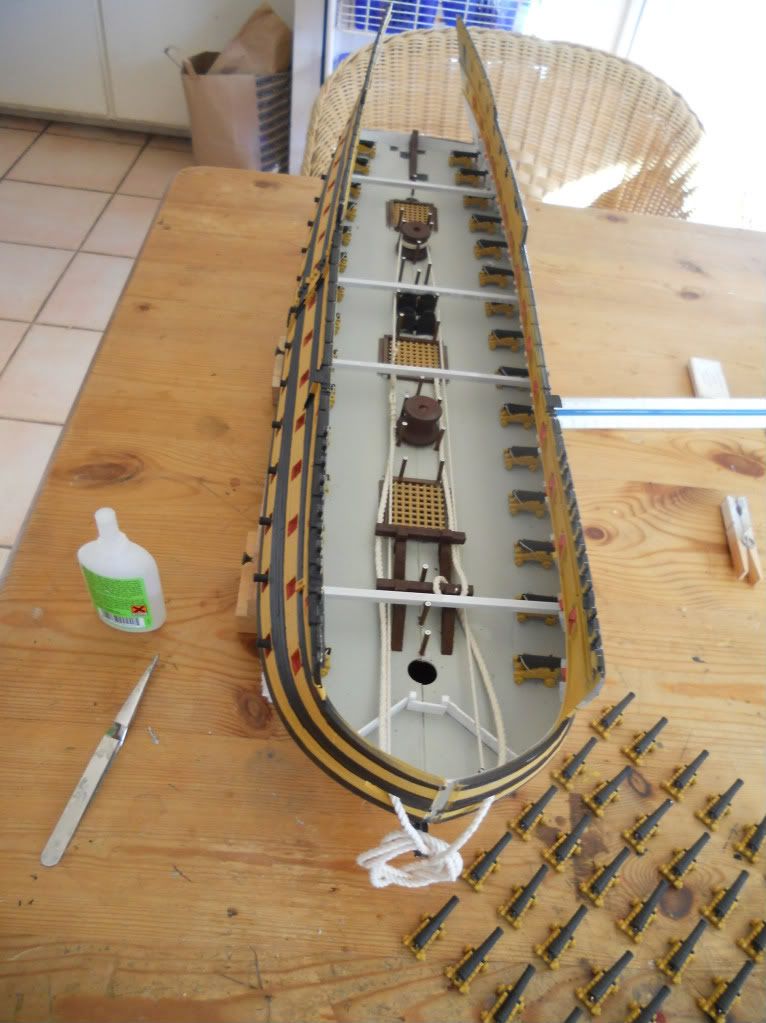It is probably a good time for an explanation of what's becoming a somewhat archane conversation. While I am no expert, I will offer some insight for the new capital ship modelers as to what all of this anchor setting and weighing mechanics mean.
Those of you with rum on your breath can sit back and chortle.
While Constitution was a frigate by nature, she was a kick butt one and an equal if not superior to the fighting ships of her time. Like when the Phantom II arrived in Vietnam. But I digress.
The anchorage of a ship of that size and power was an operation that was started by gravity but ended by shear human power.
She had anchors totalling 2 to 3 tons, but she also set them on long cables (hemp ropes) that weighed about twice that when wet.
In general, these cables were stowed in the lowest part of a ship, in an area called the cable tier. They were layed out on gratings from which a lot of water drained. They were really big, as in 20 to 24 inches in diameter.
When hauled in, they did not themselves wrap around the machine (capstan) that provided power.
They were lashed with short pieces of line to a fairly large line called a messenger. The messenger was wrapped around the capstan and went from a series of big posts in the bows to the capstan, and back again in a closed circuit. Boys lashed the cable to the messenger as the cable came aboard with nips (they were nippers) and others unlashed the two as they approached the capstan. The cable went down to the tiers and the messenger went around the capstan and back to the bows.
The capstan was a one, two or even three deck affair, that was connected by a vertical axle. There were pawls, ratchets, that kept it from regressing.
Here's my representation from my Victory on the middle gun deck. I've been critiqued every way on several forums, but you get the idea. In the pic, the messenger is under tension.

You can also see that the port cable is somewhat looped around a really stout structure, the anchor bitt, because it will take the load of the ship at anchor.
In the Bay here, the ebb and flow is usually about 5 knots plus-minus in and out of the 'Gate, but the wind is anywhere from nothing to 30 knots steady in from the northwest- west. Ships in the anchorage always point west.
Here's a link to a site that describes Victory. Four times the effort that Connie made to raise her bowers.
http://www.stvincent.ac.uk/heritage/1797/victory/anchor.html
Victory had about 1,000 hands. Even with 144 on the capstan, they needed 9 each to handle the great guns, and there were 36 each broadside.